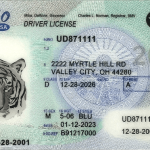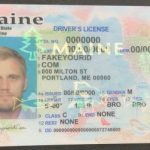In the year 2025, the printing and stationery industry faces a crucial challenge in ensuring the security of ID – related printing. Identity – related documents, such as passports, driver’s licenses, and national identity cards, play a vital role in modern society. Their authenticity and security are of utmost importance to prevent fraud, identity theft, and other malicious activities.
## Technological Advancements for ID – related Printing Security
### Advanced Printing Technologies
One of the primary ways the printing and stationery industry is dealing with ID – related printing security in 2025 is through the adoption of advanced printing technologies. For instance, the use of holographic printing has become more prevalent. Holograms are extremely difficult to replicate and can be incorporated into ID documents to add an extra layer of security. These holograms can display complex patterns and images that change when viewed from different angles.
Another significant technology is microprinting. Microprinting involves printing text or images that are so small that they are almost invisible to the naked eye. Special magnifying tools are required to read or view them. In ID – related printing, microprinting can be used to embed unique identification numbers or security messages within the document. Any attempt to copy or forge the document will likely result in the microprinting being distorted or unreadable.
### Digital Security Features
The industry is also leveraging digital security features. In 2025, many ID documents are equipped with embedded microchips or radio – frequency identification (RFID) tags. These chips or tags store a wealth of information about the document holder, such as biometric data (fingerprints, iris scans), personal details, and security – related information. The data stored on these chips is encrypted, making it extremely difficult for unauthorized parties to access or manipulate.
Encryption algorithms have become more sophisticated. Strong encryption ensures that the data transmitted between the ID document and the verification devices is secure. For example, when a passport is scanned at an airport checkpoint, the data exchange between the passport’s chip and the scanning device is protected by high – level encryption, preventing eavesdropping and data theft.
## Stringent Quality Control and Verification Processes
### Pre – Printing Quality Checks
Before any ID – related printing begins, the printing and stationery industry in 2025 has implemented stringent pre – printing quality control measures. This includes inspecting the printing materials, such as paper and ink. Specialized paper with unique security features, such as watermarks or security fibers, is used for ID documents. These papers are carefully sourced and tested to ensure their authenticity and quality.
The ink used in ID – related printing is also of high security standards. Some inks change color under different lighting conditions or when exposed to certain chemicals. Before the printing process starts, the ink is tested to ensure its color – changing properties and other security features are intact.
### Post – Printing Verification
Once the ID documents are printed, a series of post – printing verification processes are carried out. Optical character recognition (OCR) technology is used to check the accuracy of the printed text. Any misspellings or errors in the personal details printed on the ID document can be detected immediately.
Biometric verification is also an important part of the post – printing process. The biometric data stored in the microchip or RFID tag of the ID document is cross – checked with the biometric data captured during the document issuance process. This ensures that the document is associated with the correct individual.
## Training and Certification for Printing Professionals
### Technical Training
In 2025, printing professionals in the ID – related printing sector are required to undergo extensive technical training. They need to be well – versed in the latest printing technologies, such as holographic printing, microprinting, and digital security features. Training programs cover the operation of advanced printing equipment, as well as the maintenance and calibration of these machines to ensure consistent and high – quality printing.
For example, professionals are trained on how to handle and apply holographic foils during the printing process. They learn about the proper temperature, pressure, and speed settings to achieve the best results. Similarly, they are educated on how to program and manage the digital security features, such as encryption and data storage in microchips.
### Security Awareness Training
In addition to technical training, security awareness training is of great importance. Printing professionals are made aware of the potential security threats and vulnerabilities in ID – related printing. They are taught how to identify signs of attempted fraud or forgery, both during the printing process and in the final product.
For instance, they are trained to spot subtle differences in the color, texture, or alignment of printed elements that could indicate a forged document. They also learn about the importance of maintaining strict confidentiality and access control in the printing facility to prevent unauthorized access to sensitive printing materials and data.
## Collaboration with Law Enforcement and Regulatory Bodies
### Information Sharing
The printing and stationery industry in 2025 actively collaborates with law enforcement agencies and regulatory bodies. There is a regular exchange of information regarding emerging security threats and counterfeiting techniques. Law enforcement agencies can provide valuable insights into the latest trends in identity fraud and the methods used by criminals to forge ID documents.
In turn, the printing industry can share information about new security features and technologies being developed. This two – way information sharing helps both parties stay one step ahead of potential threats. For example, if law enforcement discovers a new method of counterfeiting a particular type of ID document, they can inform the printing industry, which can then take steps to enhance the security of the document’s printing process.
### Regulatory Compliance
The industry also ensures strict compliance with all relevant regulations and standards set by regulatory bodies. These regulations govern various aspects of ID – related printing, including the use of materials, the printing process, and the handling of personal data. Printing companies are required to obtain the necessary licenses and certifications to operate in the ID – related printing sector.
Regular audits and inspections are carried out to ensure that companies are adhering to these regulations. Non – compliance can result in severe penalties, including fines and the revocation of the printing license. This regulatory framework helps maintain the integrity and security of ID – related printing in 2025.
## Common Problems and Solutions
### Problem 1: Counterfeiting of ID Documents
– **Description**: Counterfeiters are constantly trying to replicate ID documents using various methods, such as scanning and printing or using low – quality materials to mimic the original.
– **Solution**: The printing and stationery industry can continue to invest in more advanced anti – counterfeiting technologies. This includes the development of new holographic patterns, more complex microprinting, and enhanced encryption for digital security features. Additionally, increased collaboration with law enforcement to track down and prosecute counterfeiters can act as a deterrent.
### Problem 2: Data Breaches in ID – related Printing
– **Description**: Hackers may target printing facilities or the systems used to manage ID – related data to steal personal information stored in microchips or RFID tags.
– **Solution**: Printing companies should implement state – of – the – art cybersecurity measures. This includes firewalls, intrusion detection systems, and regular security audits. Employee training on data security best practices is also crucial to prevent internal data breaches.
### Problem 3: Ink and Paper Quality Issues
– **Description**: Low – quality ink or paper can affect the security features of ID documents. For example, the color – changing properties of ink may not work as expected, or the paper may not have the necessary security fibers.
– **Solution**: Establish strict quality control measures for ink and paper suppliers. Conduct regular testing of incoming materials to ensure they meet the required security standards. Additionally, work with suppliers to develop new and improved materials with enhanced security features.
### Problem 4: Inconsistent Printing Quality
– **Description**: Variations in printing quality can lead to issues such as misaligned text, blurred images, or uneven color distribution. These inconsistencies can make it easier for counterfeiters to create replicas.
– **Solution**: Implement advanced printing equipment with automated calibration and quality control systems. Train printing professionals on proper equipment operation and maintenance to ensure consistent printing quality. Regularly monitor and adjust the printing process to minimize any variations.
### Problem 5: Lack of Awareness Among End – Users
– **Description**: End – users may not be able to identify genuine ID documents from forged ones, making them vulnerable to fraud.
– **Solution**: Launch public awareness campaigns to educate end – users about the security features of ID documents. Provide information on how to check for authenticity, such as the presence of holograms, microprinting, and the proper functioning of digital security features. This can help end – users be more vigilant and report any suspicious documents to the relevant authorities.
Fake ID Pricing
unit price: $109
| Order Quantity | Price Per Card |
|---|---|
| 2-3 | $89 |
| 4-9 | $69 |
| 10+ | $66 |


